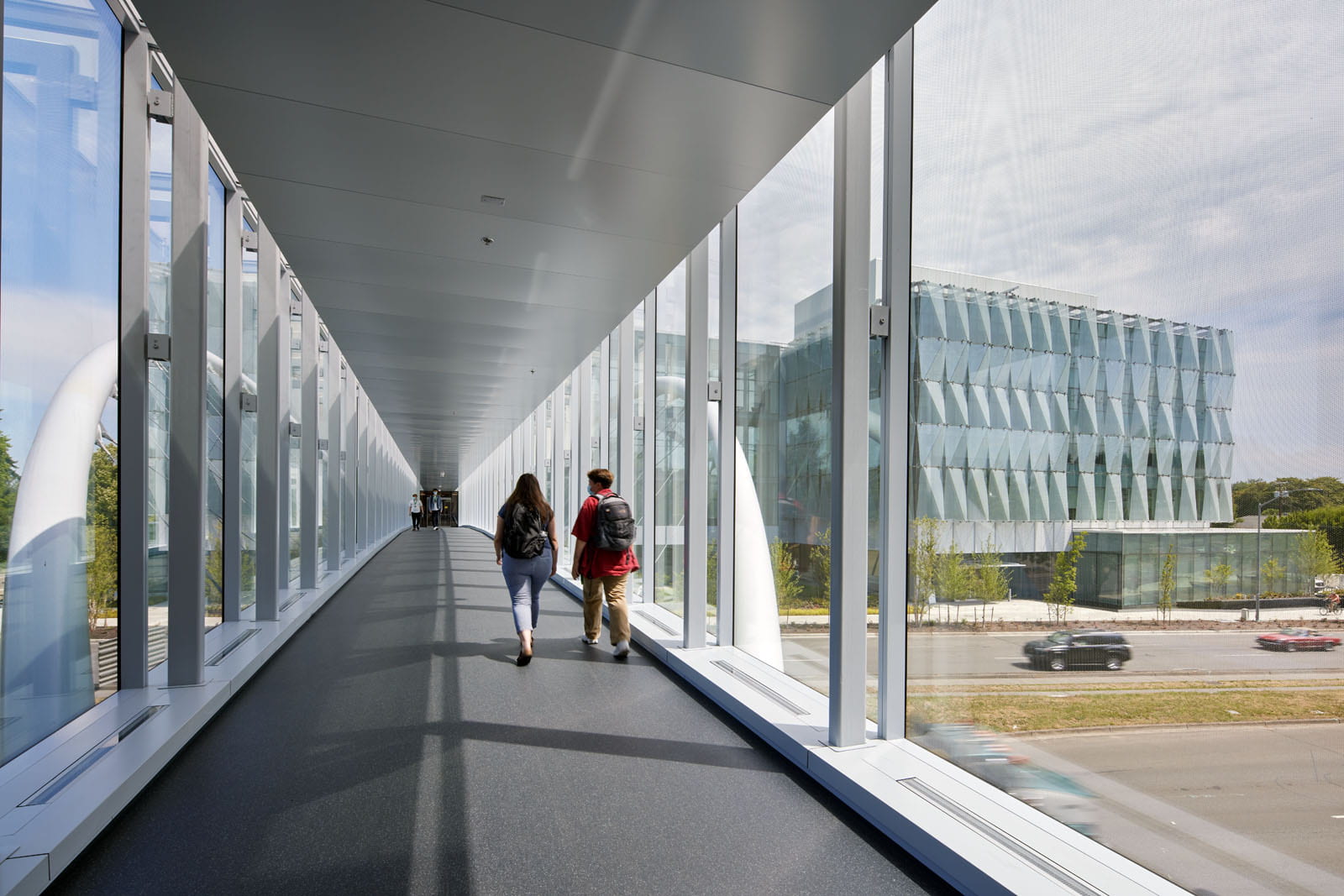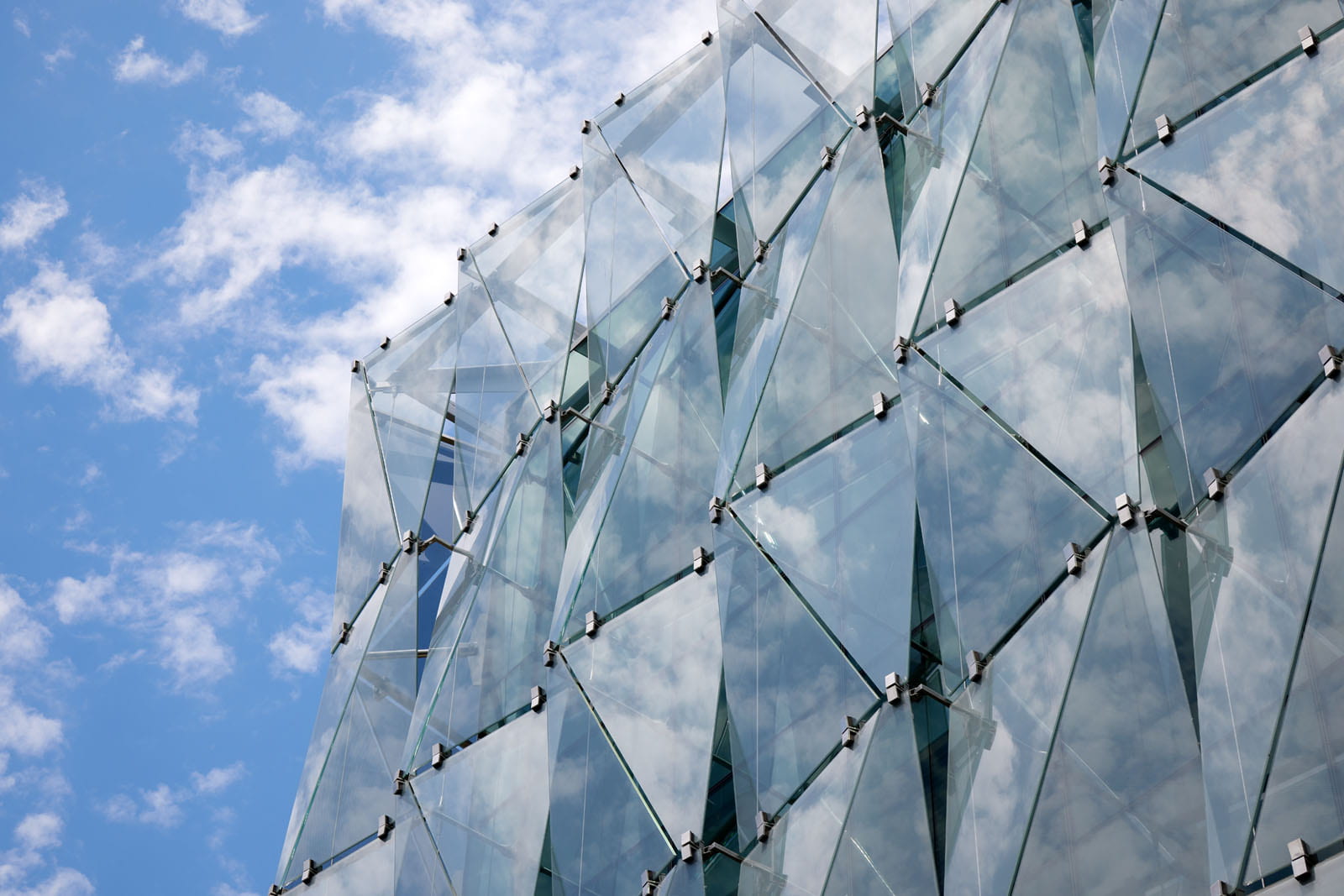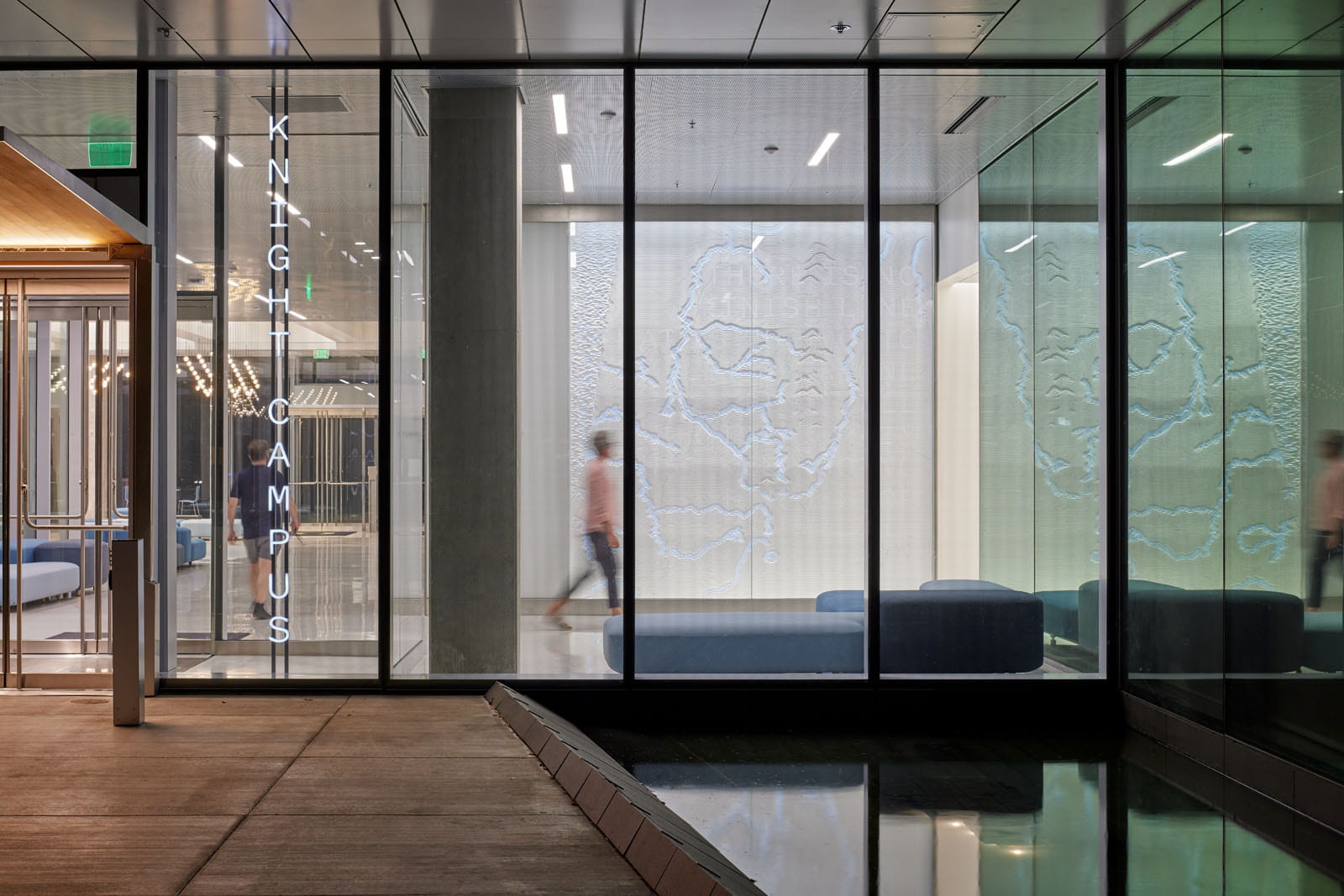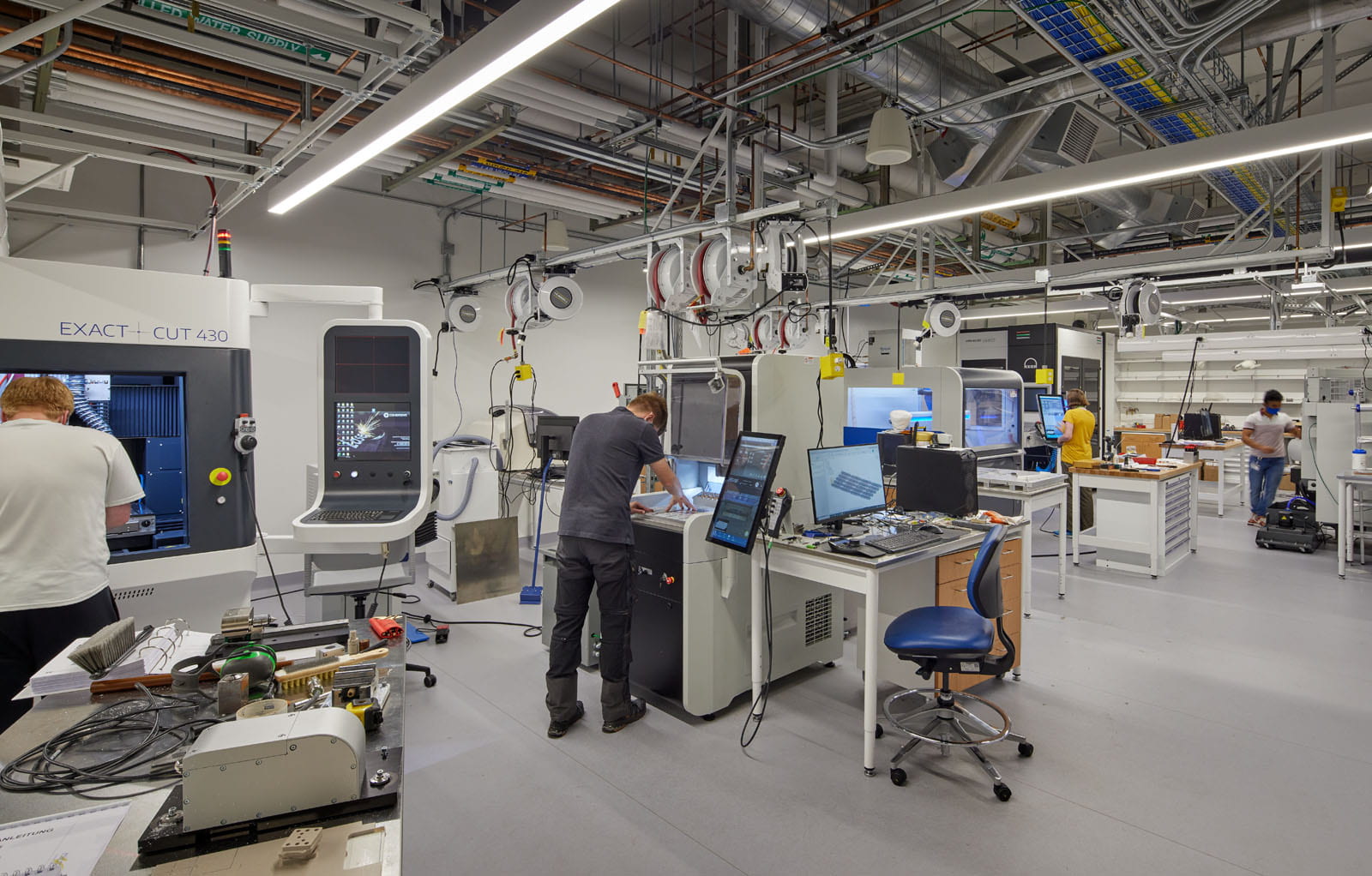CFAR Project Incubator Fellows 2023-2024
Image Caption: University of Oregon Knight Campus for Accelerating Scientific Impact. Photo credit: Bruce Damonte, Knight Campus Media Assets
ABOUT
The CFAR Project Incubator (CPI) is a partnership between the University of Oregon Department of Art’s Center for Art Research (CFAR) and Phil and Penny Knight Campus for Accelerating Scientific Impact, which affords artists working in any medium the opportunity to explore and conceptualize new work as a part of a vibrant, interdisciplinary research community that is supported by cutting-edge facilities and technical staff. This program is born out of CFAR and Knight Campus’s goals to create nimble systems that catalyze innovation and discovery by responding to the needs of individual’s specific research agendas. CPI’s emphasis is not necessarily on the production of a body of work, but instead on speculative, practice-based inquiry focused on ideation, experimentation, prototyping, testing, fabricating, and theoretical research to initiate and incubate new work. This program is generously funded by The Ford Family Foundation.
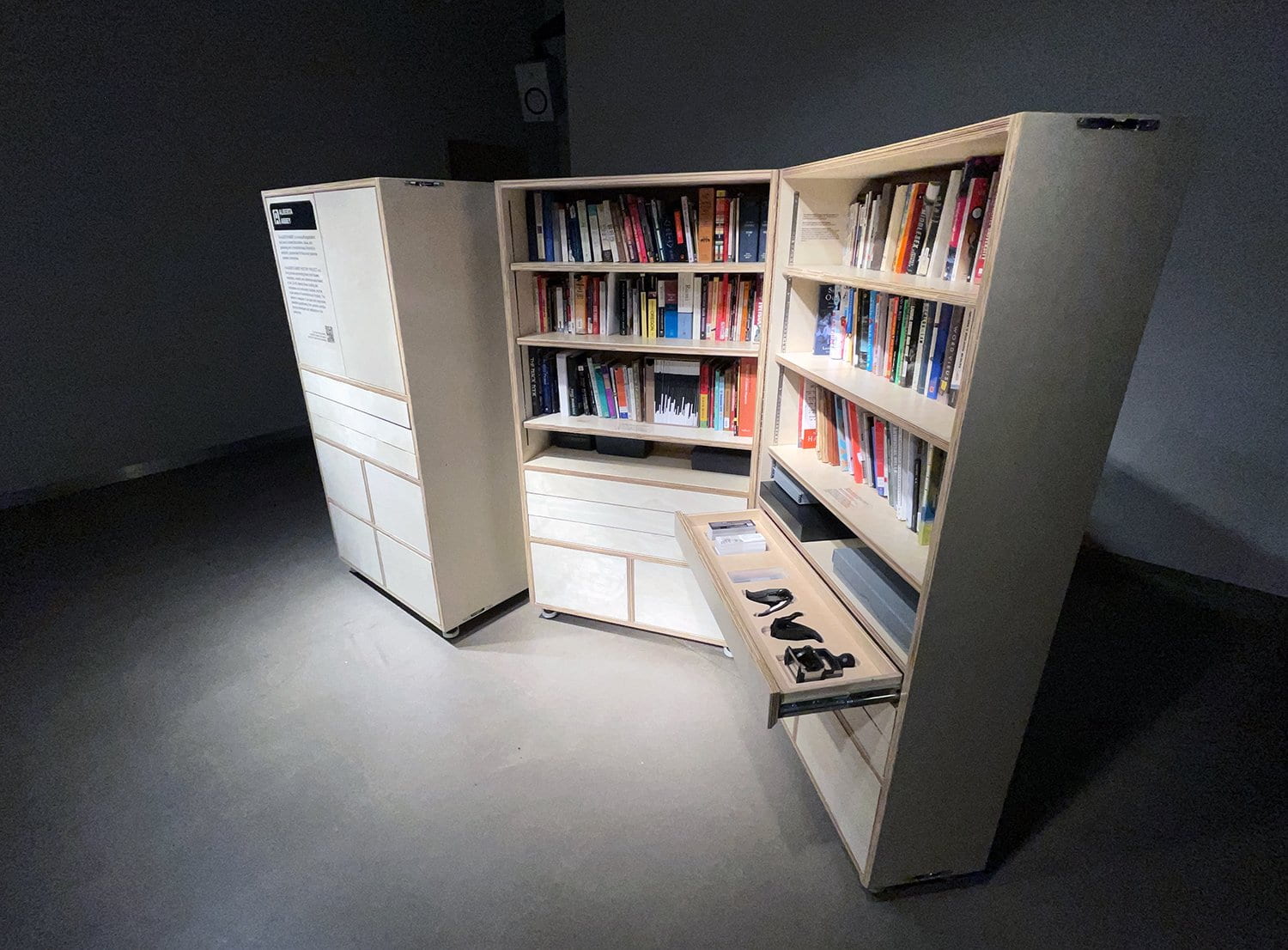
Image caption: Alberta Abbey History Project/Service Works
Brian Gillis
Residency Dates: 10/9/23 – 11/3/23
Project: With a recent acknowledgment that “Service” is a foundational principle in my practice, I have begun to see all the ways that this applies to interventions in public spaces, partnerships with individuals and communities, and the production of objects for use. I’m thinking more and more about objects that provide a resource for users and have come to the concept of “Service Objects” as a possible way to exercise this potential.
- To incubate of a series of “Service Objects”, or utilitarian, sculptural objects that support the acquisition of skills or knowledge related to social equity, access, and agency. Some of these objects will enable rote skill-building through educational manipulatives that draw on my own history, like lock-picking trainers or DIY tattoo guns for juveniles. Other objects will be made to publicly support institutional missions, like a mobile story archive, kiosk for instructional videos, or human-generated power supply.
- To model and test possible forms, and to produce finished objects for immediate use.

Image caption: Gelashell 2/n, gelatin pour with silkscreen, 15″ x 9″ x 2 3/8”, 2023
Noelle Herceg
Residency Dates: 11/6/23 – 12/4/23
Project: I explore physical, spatial and temporal materialities through a lens of printmaking, creating bio-plastic forms that undergo multiple stages of transmutation. My work is motivated by the “print” as a trace, leftover, or way of documentation–that may or may not last. My ongoing series of work investigates a connection between the materiality of gelatin–collagen based protein obtained from decaying animal skin, bones, and tendons–and my own skin.
- To further develop a series of sculptural prints while investigating the material kinship I have with gelatin.
- To create new trays for high-density gelatin pours and to explore specificity of the edges of the cast sheet.
- To utilize the printed image and explore the interaction between printed imagery and the transient surface of gelatin plastic.
- To activate discussions regarding material kinship and ephemerality.
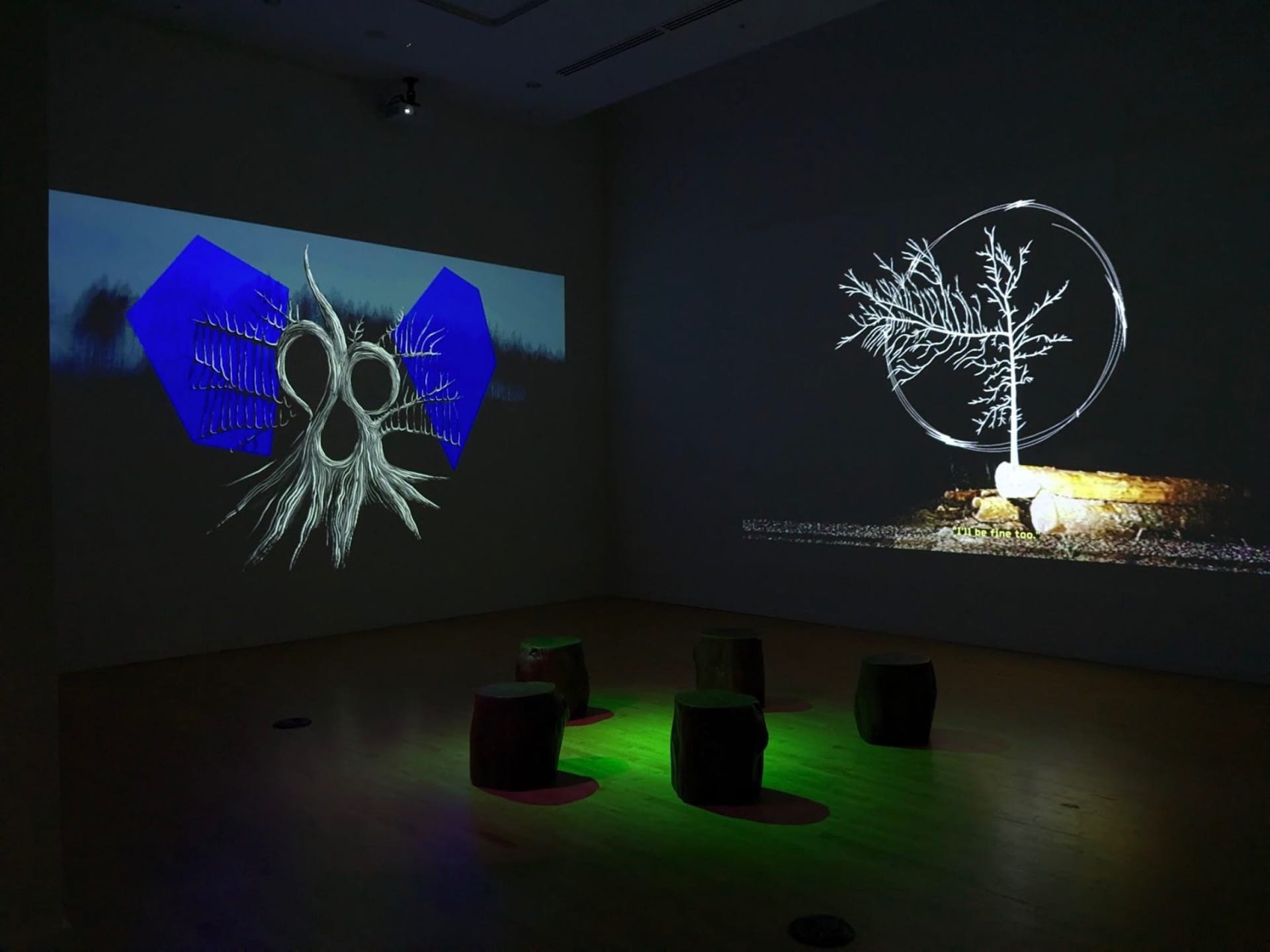
Image caption: Dendrostalkers, 2023
Julia Oldham
Residency Dates: 1/8/24 – 2/1/24
Project: The Hyperforest is an ongoing project that imagines trees that have evolved to become higher dimensional beings (Dendrotopes) in order to escape the dangers of clear cutting, climate change and catastrophic wildfire.
- To develop a mathematical description or data set describing a higher dimensional tree, or Dendrotope, and to then visualize that data using interactive computing. To accomplish this, I will start with a data set describing a 3D model of a tree, and then add axes with additional data.
- To develop methods of adding axes/dimensions to that data set to create a Dendrotope.
- To create a series of visual images, utilizing different data visualization techniques ranging from graphs to digital 3D models in which I translate higher dimensional data back into a roughly 3D form.
- To have the data set and visualizations serve as assets for animation, print projects and writing about the Hyperforest.

Image caption: 3D rendering of an amulet
hiba ali
Residency Dates: 2/5/24 – 3/4/24
Project: Reflecting on the role of women of color’s labor and technology allows me to consider the labor and journeys of my ancestors, particularly the femme and queer people from previous generations. In my decolonial, antiracist and feminist arts practice, it is very important to center the margins, people and places, and histories that are forgotten, hidden or cast-aside, to visualize underrepresented histories and issues of caste, class, and antiblackness.
Amulet jewelry are ritual objects that have been used for generations in the cultures of the Swahili-Indian ocean region. Making amulet jewelry is part of my continued research on practices of Sufi devotion and protective symbols within the Swahili-Indian Ocean region. Good omens and well wishes, as ritual objects, offer a circle of protection that connect us to our memories and hopes for the future. The ornate design of the milled amulet calls forth meditative gestural drawings that can soothe the mind and hold us.
- To develop at least fifteen amulet jewelry items such as necklaces and rings anchored in practices of Sufi devotion and protective symbols within the Swahili-Indian Ocean region.
- Each necklace will have a cavity for scent paste of myrrh, frankincense, jasmine, and rose and drawings of sacred geometry to be placed.
